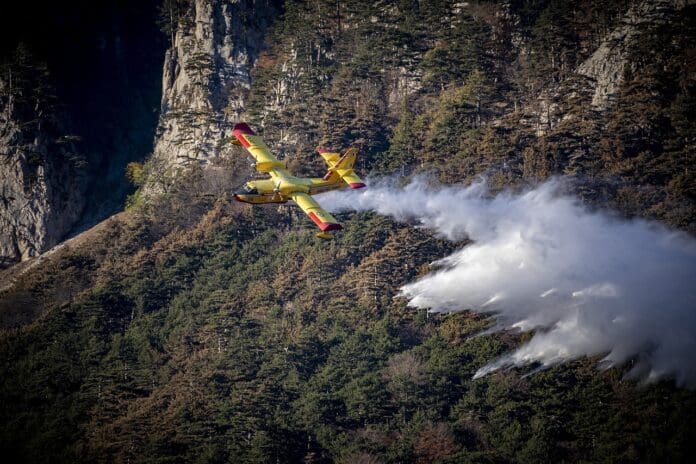This post is also available in:
 עברית (Hebrew)
עברית (Hebrew)
A new collaboration between an aerospace firm and a defense technology firm is aiming to automate and streamline wildfire response through an advanced aerial platform. The initiative integrates Korean Air’s unmanned aerial vehicles (UAVs) with Anduril’s system, creating a comprehensive solution designed to minimize the need for human intervention throughout the entire emergency lifecycle.
According to the press release, at the heart of the platform is Anduril’s Lattice software, which consolidates data from a wide network of sensors—spanning land, air, and satellite—into a single, real-time operational interface. This enables early detection of wildfires and immediate coordination of response assets. Once a fire is detected, autonomous aircraft, including Anduril’s Fury air vehicle and Korean Air’s UAVs, are deployed to evaluate the situation. These systems can operate independently to assess fire spread and intensity before determining the appropriate suppression response.
The integration aims to reduce the delay caused by traditional fire detection methods, which often rely on human observation and can miss early-stage fires. By combining existing systems with new technologies jointly developed through the partnership, the platform is intended to provide more accurate situational awareness and faster reaction times.
According to the companies, the UAVs will be capable of not only initial reconnaissance but also coordinating follow-on responses such as dispatching additional drones or crewed aircraft for fire suppression, depending on fire size and severity.
This development builds on an earlier agreement between the two firms to explore UAV cooperation across the Asia-Pacific region. Korean Air continues to invest in UAV research, including stealth and structural technologies, which may contribute to improved performance and survivability in demanding wildfire environments.
While the focus remains on supporting wildfire efforts, the modularity of the system suggests potential for broader national security and emergency response applications. The partnership reflects a growing trend in leveraging autonomous systems and AI-driven platforms to handle large-scale, high-risk challenges with greater speed and precision.

























